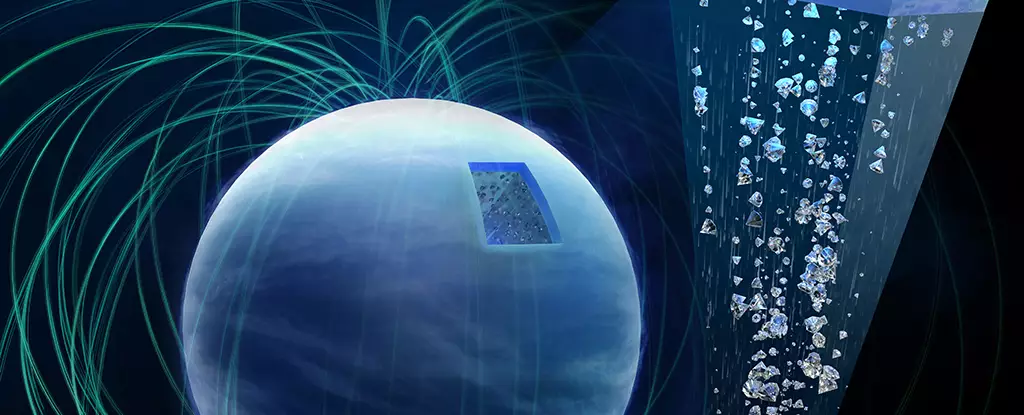Scientists have long been fascinated by the extreme conditions of Neptune’s atmosphere and the possibility of diamond rain. Recent research by an international team suggests that this blizzard of bling may not be unique to Neptune and could be a common phenomenon throughout the Universe. In this article, we will delve into the details of this groundbreaking study and explore the implications it has for our understanding of planets beyond our Solar System.
The study’s findings challenge previous assumptions about the conditions required for diamond formation. Carbon can form crystals on gas planets such as Neptune and Uranus due to the ultra-high temperatures and pressures deep in their atmospheres. The research conducted in laboratory conditions simulated these diamond-forming processes and revealed that the temperature and pressure thresholds for diamond formation are lower than anticipated. This revelation suggests that diamond rain could occur on smaller gas planets, known as ‘mini-Neptunes,’ which are abundant outside our Solar System.
The discovery also sheds light on the mysteries surrounding the magnetic fields of Uranus and Neptune. Unlike Earth, these ice planets have asymmetrical magnetic fields, posing a puzzling question about their origin. The study suggests that the descending diamond particles, accompanied by gas and ice, might directly influence these magnetic fields. The movements within the conductive ices on these planets, triggered by the formation of diamonds, could play a role in generating their magnetic fields. This revelation opens up new avenues for understanding the complex dynamics of planetary magnetism.
To obtain these groundbreaking results, the research team utilized the European XFEL, an X-Ray Free-Electron Laser, to observe the formation of diamonds from a hydrocarbon compound called polystyrene film. By subjecting the film to immense pressures within a specialized setup, the researchers were able to extend the duration of their observations compared to previous experiments. This prolonged examination provided valuable insights into the diamond formation process and the conditions necessary for its occurrence.
This study marks an important milestone in our understanding of icy planets and opens up new possibilities for further research. Scientists have made significant strides in deciphering how diamond rain might shape distant planets and influence their physical properties. With this newfound knowledge, future studies can delve deeper into the mechanisms behind this phenomenon and its impact on the broader exoplanet population.
The prospect of diamond rain on icy planets presents an intriguing puzzle for scientists to solve. The newfound understanding of the formation and prevalence of diamond rain not only deepens our knowledge of local icy planets but also holds implications for the study of exoplanets beyond our Solar System. Perhaps, one day, we will have the opportunity to explore the mysteries of Neptune’s atmosphere firsthand and witness the mesmerizing spectacle of diamond rain. Until then, researchers will continue their quest to unlock the secrets of the Universe, one diamond at a time.


Leave a Reply